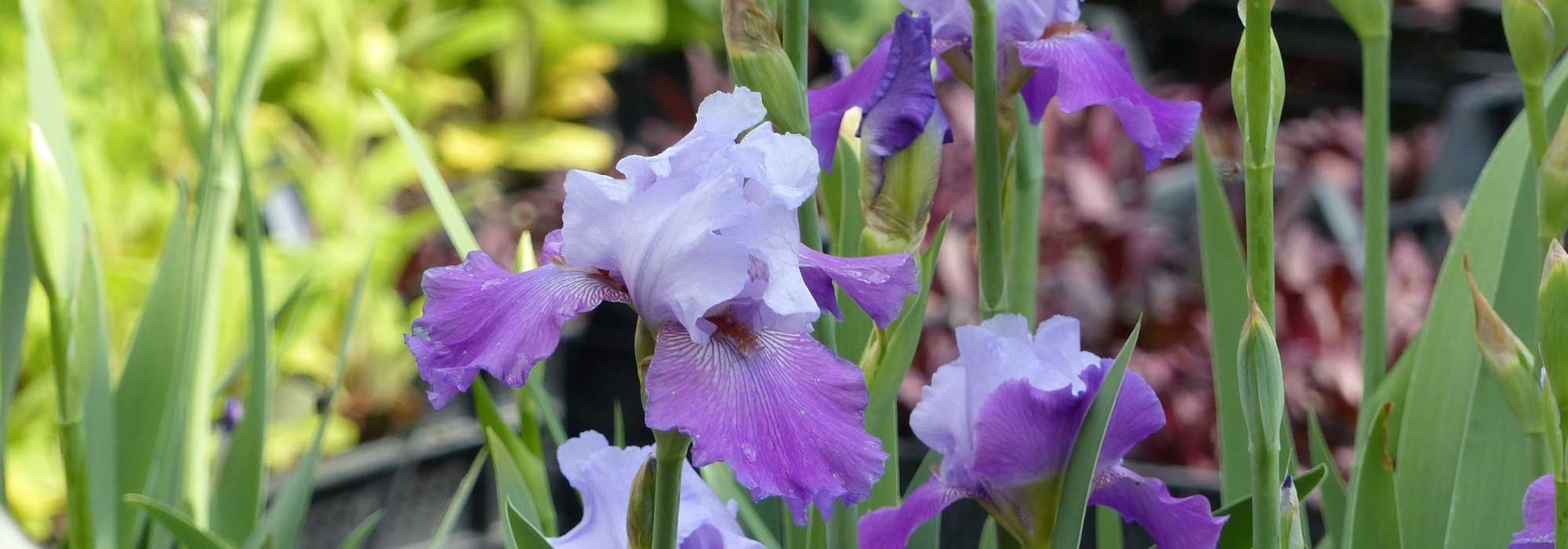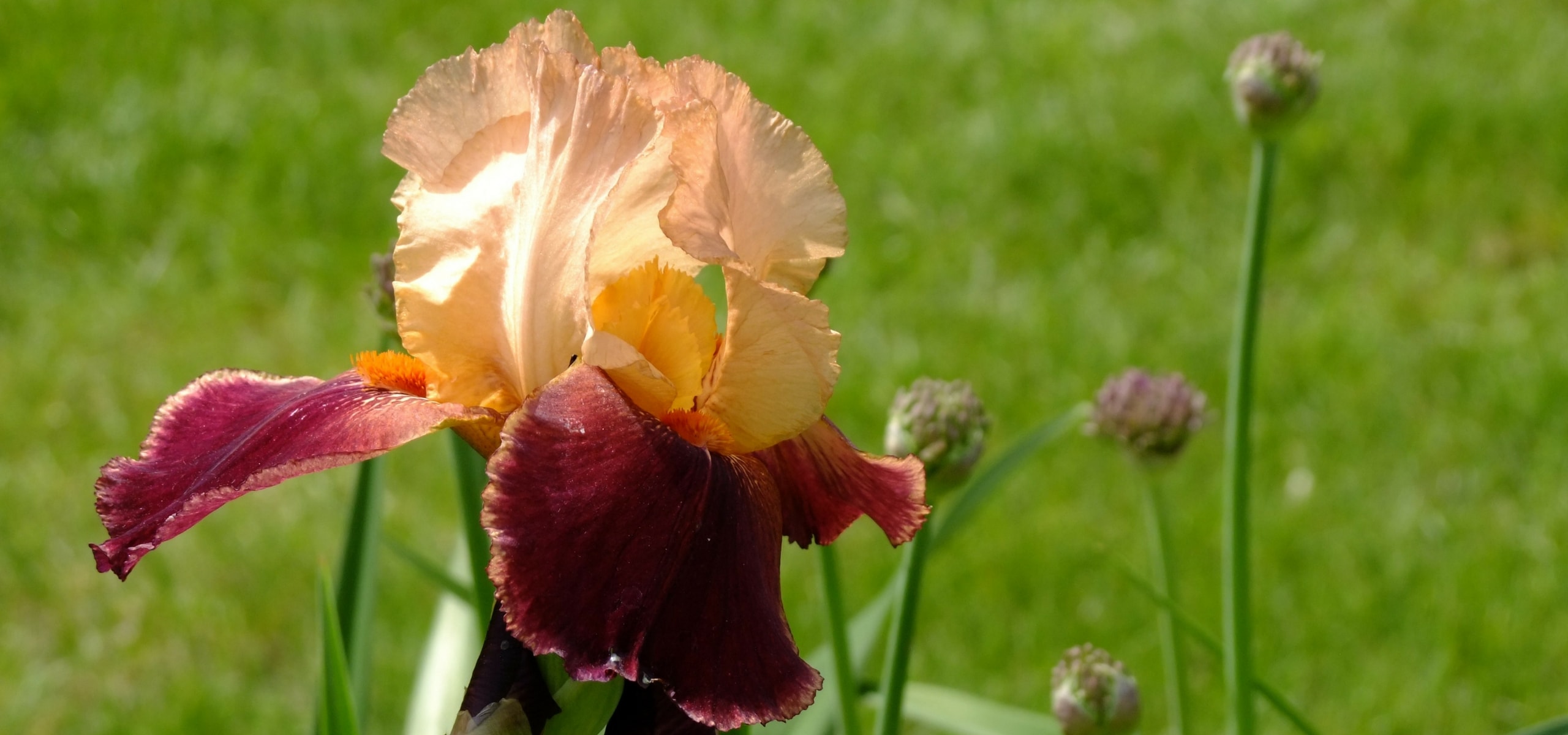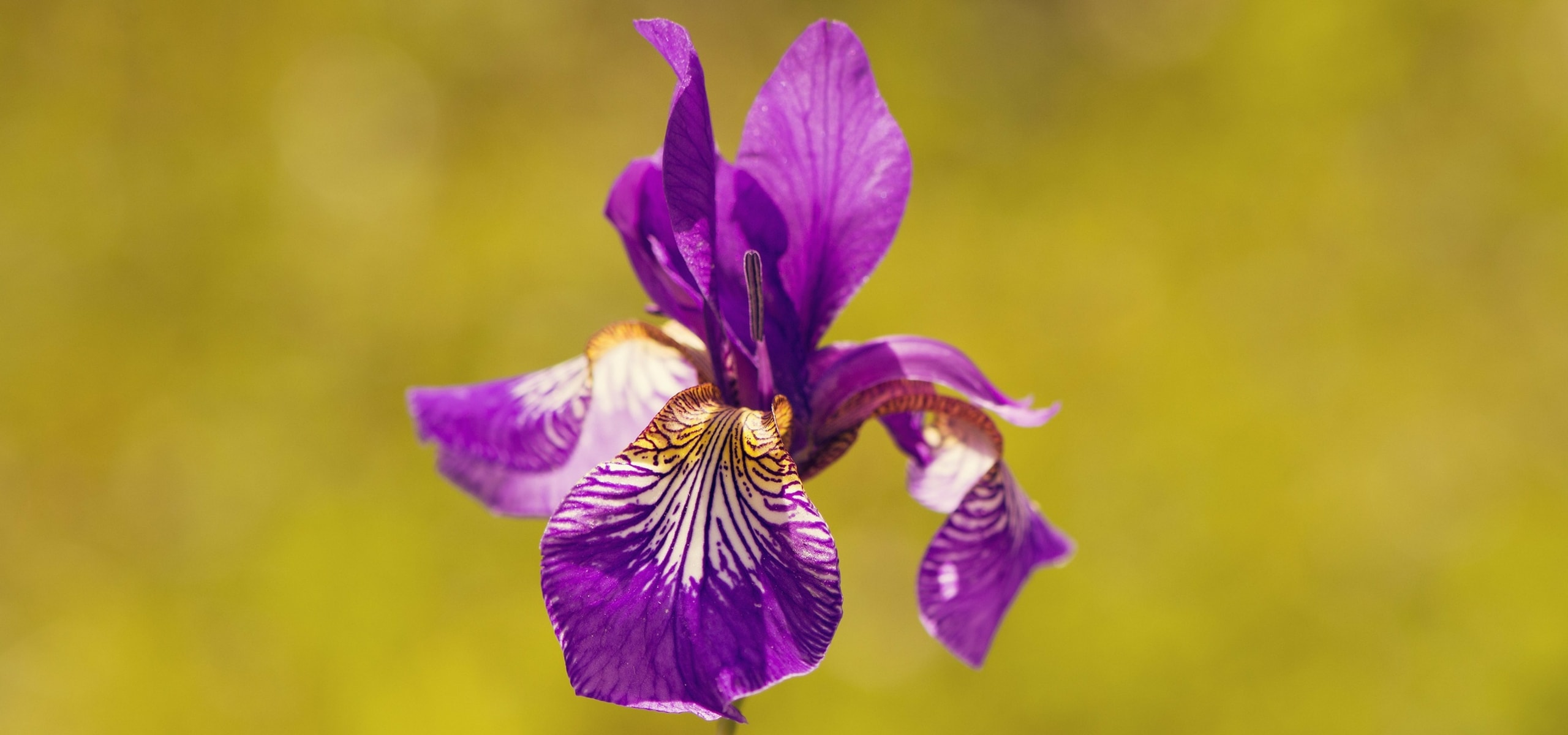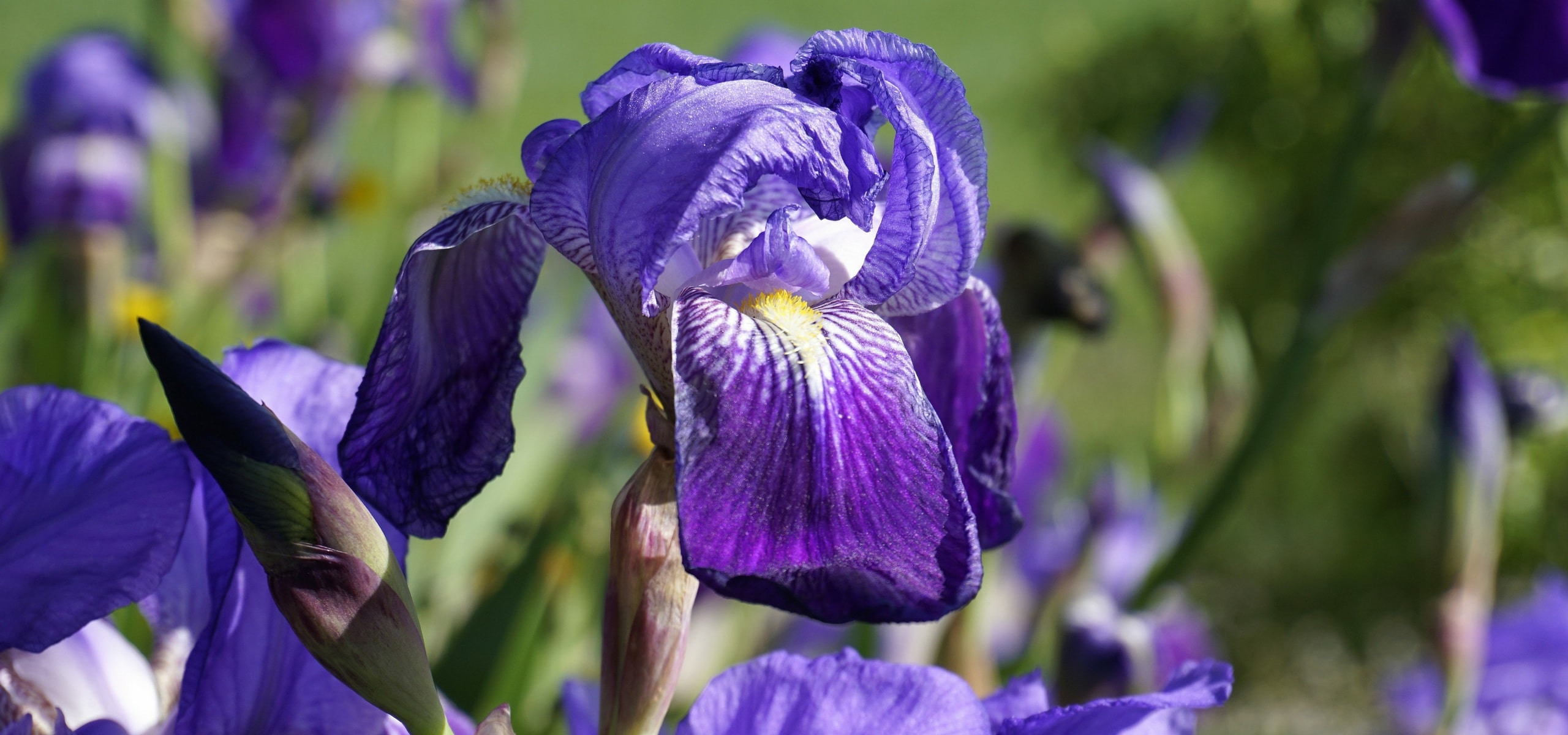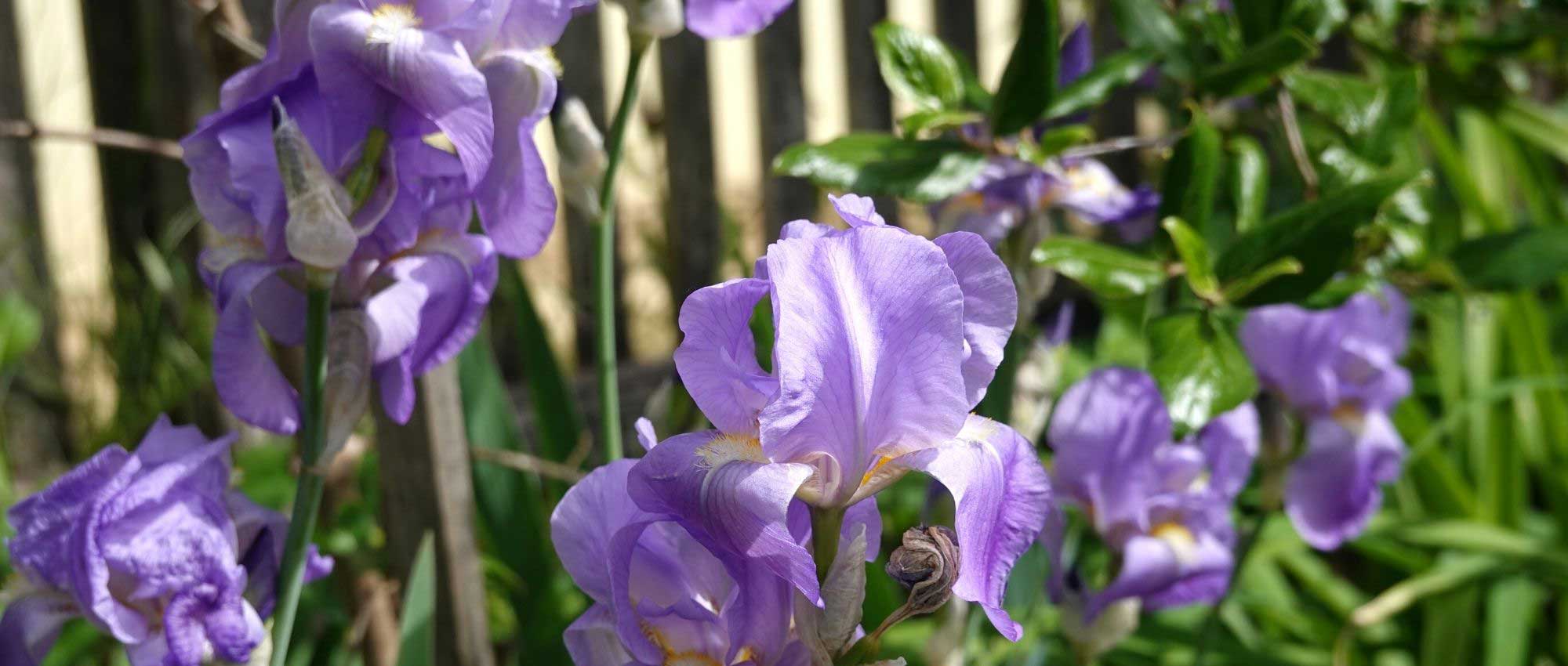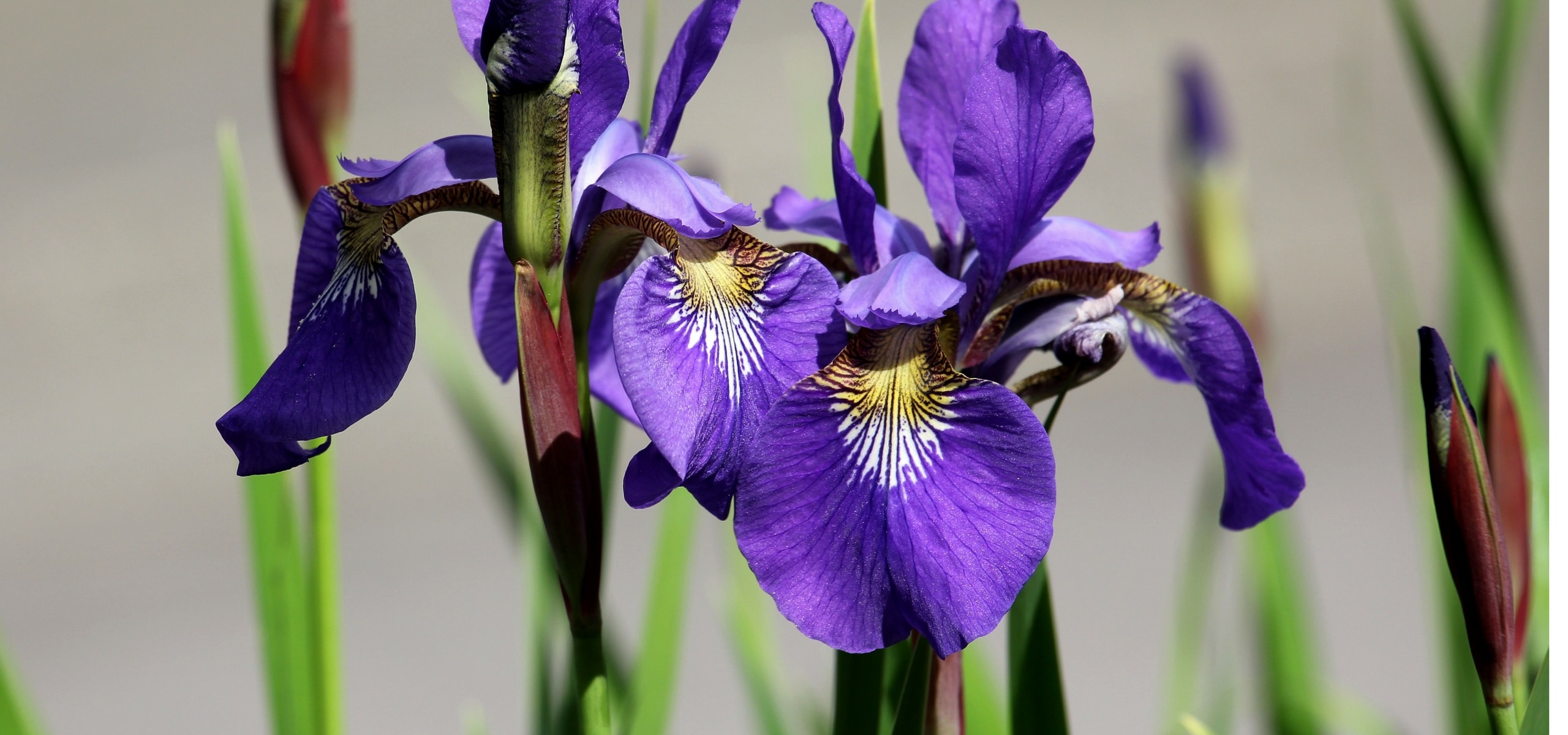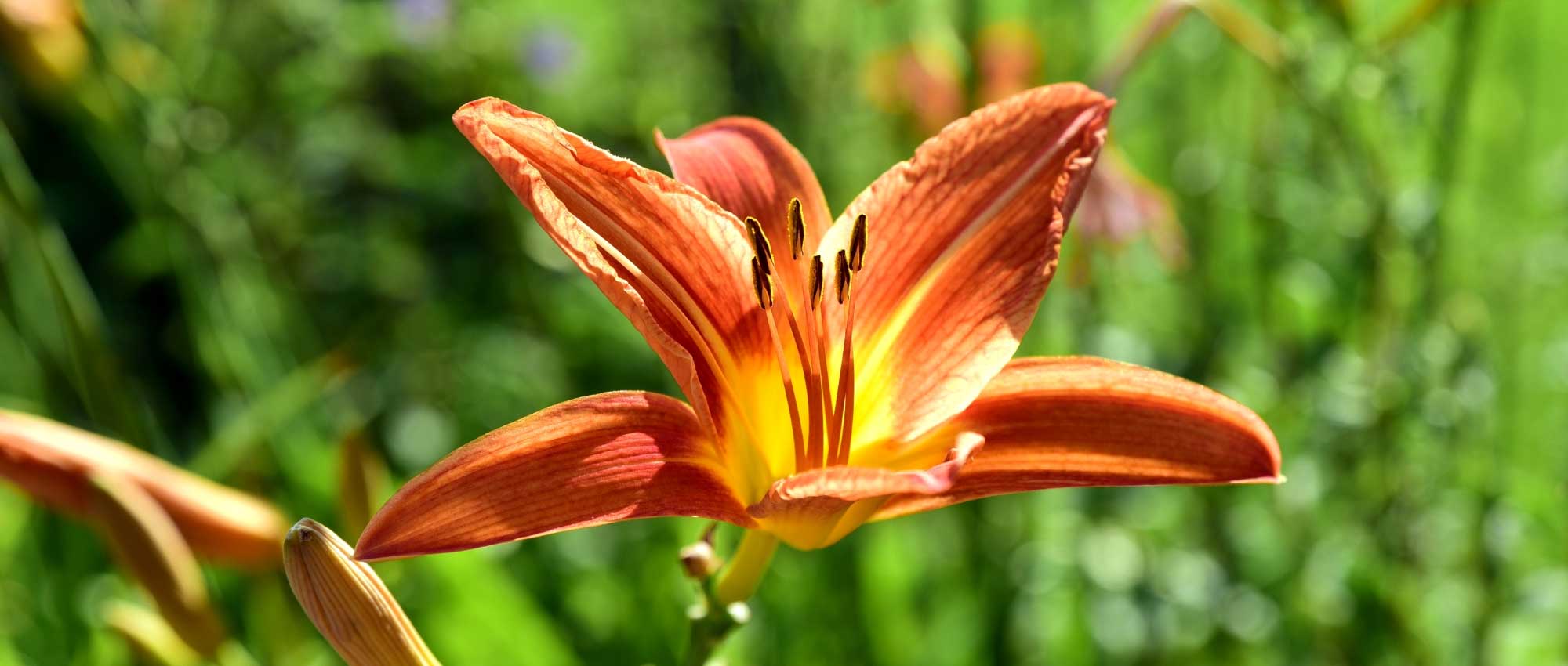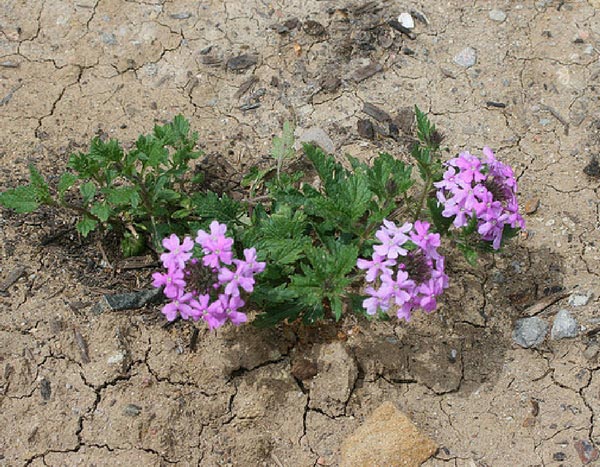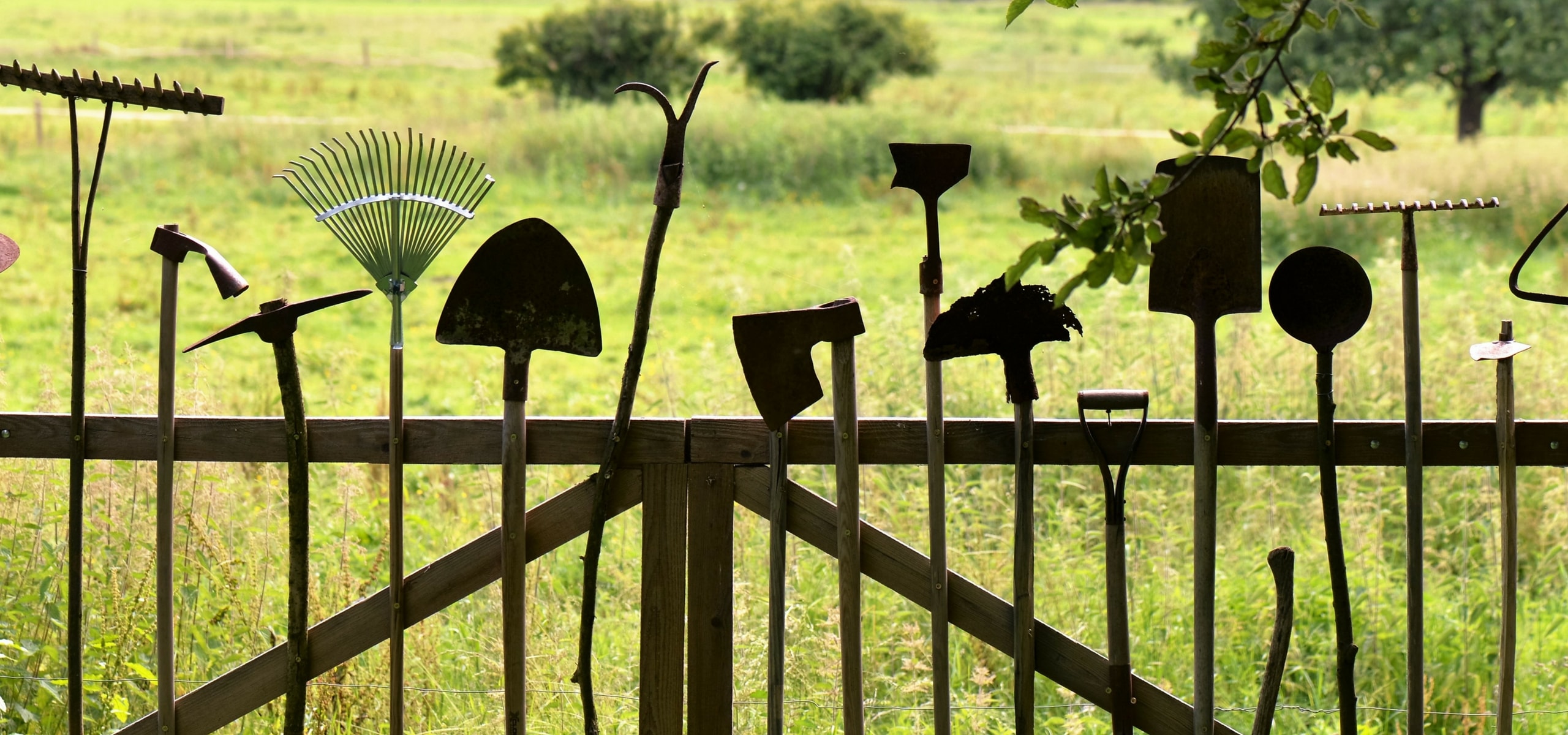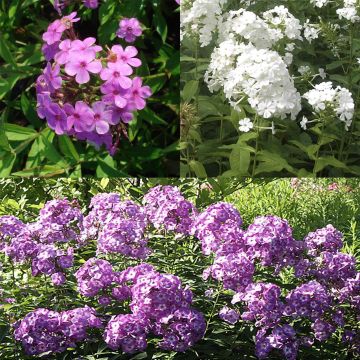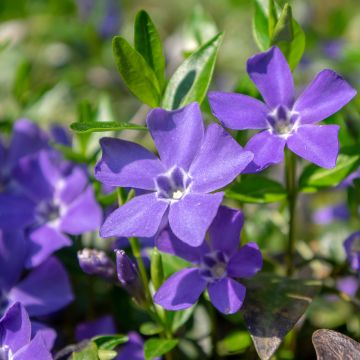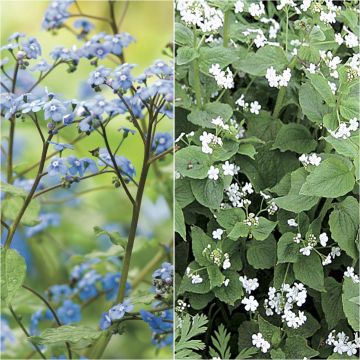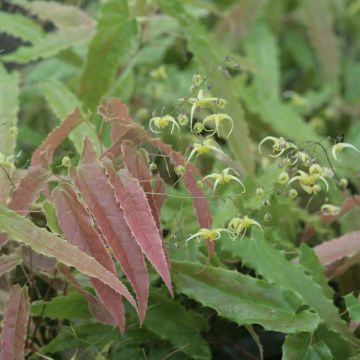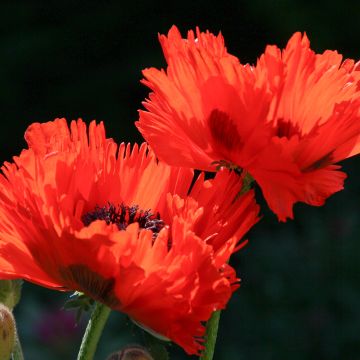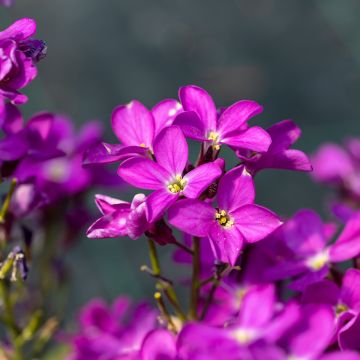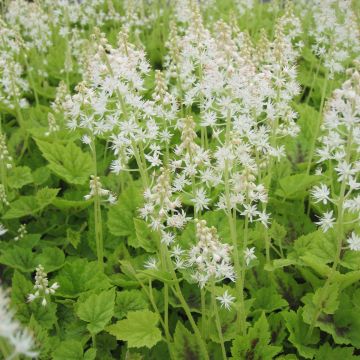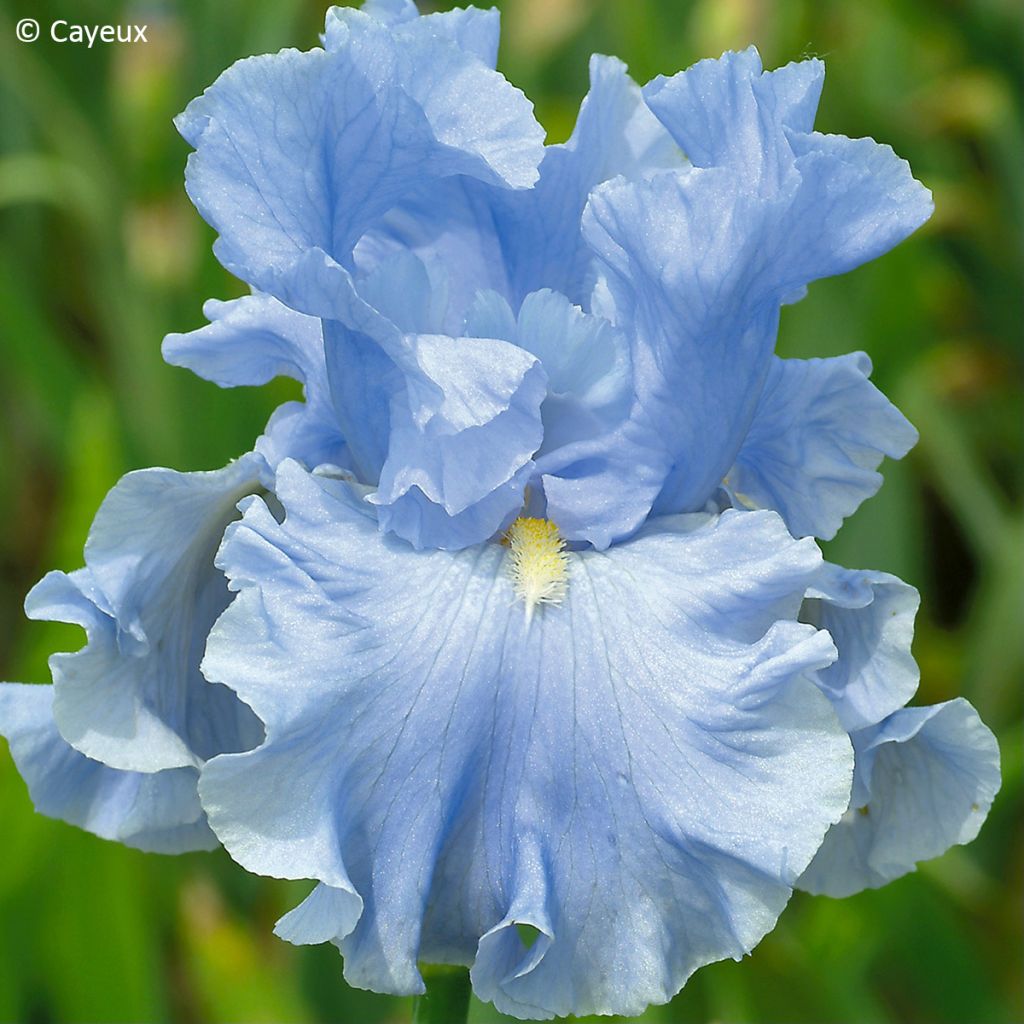

Iris germanica Into the Blue - Iris des jardins, Grand Iris barbu, Iris d'Allemagne
Iris germanica Into the Blue - Iris des jardins, Grand Iris barbu, Iris d'Allemagne
Iris germanica Into the Blue
Iris des jardins, Grand Iris barbu, Iris d'Allemagne
Special offer!
Receive a €20 voucher for any order over €90 (excluding delivery costs, credit notes, and plastic-free options)!
1- Add your favorite plants to your cart.
2- Once you have reached €90, confirm your order (you can even choose the delivery date!).
3- As soon as your order is shipped, you will receive an email containing your voucher code, valid for 3 months (90 days).
Your voucher is unique and can only be used once, for any order with a minimum value of €20, excluding delivery costs.
Can be combined with other current offers, non-divisible and non-refundable.
Home or relay delivery (depending on size and destination)
Schedule delivery date,
and select date in basket
This plant carries a 12 months recovery warranty
More information
We guarantee the quality of our plants for a full growing cycle, and will replace at our expense any plant that fails to recover under normal climatic and planting conditions.
Does this plant fit my garden?
Set up your Plantfit profile →
Description
The Iris 'Into the Blue' is a creation from the renowned Schreiner nursery, captivating with its large, intensely undulate cerulean flowers and early flowering. Refined and expressive, this tall Germanica iris combines vigour and reliability. Very hardy, it thrives in full sun in well-drained soil where it displays its full stature from early spring. It is an excellent bedding plant, elegant, hardy, and drought-resistant, ideal for creating a romantic corner in the garden.
The Iris ‘Into the Blue’ is a cultivar of tall bearded iris belonging to the Iridaceae family. It was developed in 2007 by Schreiner's Gardens (U.S.A), from the cross-breeding between the varieties ‘Above the Clouds’ and ‘Abiqua Falls’. Its flowering occurs towards the start of the tall iris season; it is often the first among pale blue irises. The botanical species reference Iris × germanica, results from an ancient cross between Iris pallida (native to the Dinaric Alps and the Italian peninsula) and Iris variegata (native to Central and Eastern Europe). In the wild, these species are found in open, rocky areas in well-drained soil in sunny positions.
The Iris 'Into The Blue' has an upright, clump-forming habit, reaching a height of approximately 91 cm in flower with an average spread of 40 to 50 cm. Of moderately fast growth, the plant offers optimal flowering from the second year under ideal conditions. The root system is rhizomatous: the rootstocks are fleshy, horizontal, and situated near the surface. They gradually spread by forming offsets, which allows for effective vegetative propagation. The flowers measure 10 to 13 cm in diameter. Heavily undulate, they display a uniform light blue colour and cream beards with pale yellow tips. They consist of three upright petals and three trailing tepals, as with all bearded irises. Flowering often begins as early as late April or early May, depending on the climate. Pollination is entomophilous, primarily carried out by bees attracted by the nectar produced at the base of the tepals. The foliage is deciduous, meaning it dies back in autumn before regrowing the following spring. It consists of long, sword-shaped, rigid, upright, slightly arching leaves measuring 30 to 50 cm long by 3 to 4 cm wide, of a glaucous green colour. The flower stems are sturdy, sparsely ramified, and well-proportioned to the foliage. They bear 6 to 8 flower buds distributed over one or two branches depending on the plant's vigour.
With its sky-blue colour and beautiful undulations, the Iris Into the Blue is a marvel for creating new spring borders. It can be showcased by integrating it into a border of blue hues, accentuated with white-flowering perennials or silver-leaved plants to enhance its brilliance. It forms a beautiful display with hardy geraniums like ‘Brookside’, the double and airy-flowered columbines ‘Blue Barlow’, the Narcissus triandrus ‘Thalia’ and the pastel pink double late tulip 'Angélique'.
The vegetable garden can be enhanced with a few clumps or borders of irises as it is also the place dedicated to growing cut flowers.
Flowering
Foliage
Plant habit
Botanical data
Iris
germanica
Into the Blue
Iridaceae
Iris des jardins, Grand Iris barbu, Iris d'Allemagne
Cultivar or hybrid
Planting and care
Do you have a sunny spot, sheltered from the wind, warm and rather dry in summer?
This is the ideal location for planting the tall iris Into the Blue! In the shade, they grow, but do not flower. Hardy, they do not require winter protection. Well-drained soil is perfectly suitable, even if it is rather dry. Iris germanica require a calcareous soil: amend your earth with lime if your soil tends to be acidic. Overly moist soil encourages rootstock rot. Plant from July to September. This gives the rootstocks enough time to grow sufficiently before lifting, and then to develop their new roots before winter. They should be planted immediately upon purchase for best results. Plan to divide the irises approximately every 4 years to provide them with fresh soil. They have vigorous growth and require space to develop and flower well. They should be planted appropriately spaced apart to the size and vigour of the variety: approximately 34-50 cm for tall varieties (5 to 10 young plants per square metre). In a monochrome plan, plant the rootstocks in a staggered pattern. To create a colour mix, it is advisable for the overall aesthetics of the iris bed to plant them in groups of several plants of the same variety. Always take into account the direction of growth of the rootstocks by arranging them in a star shape with buds and leaves facing outwards, and spacing them well away from other varieties so they have room to develop.
Planting
Dig a hole wide and deep enough. Make a large conical mound of soil in it on which to place the rootstock with the roots spread out. Cover the roots. It is important that the rootstock is left flush with the soil surface. It should not be planted in a hollow (risk of rot), so allow for the soil to settle and the iris to sink. In clay or moist ground, the rootstock should even be raised on a slight mound a few centimetres high. To help the soil adhere to the roots, firm the soil lightly and water generously immediately after planting. Water if needed 2-3 times until established.
Maintenance:
Keep the soil free of weeds by shallow hoeing, taking care not to damage the rootstocks or roots. Weeds shade the Irises, retain moisture (causing rot) and attract slugs. Similarly, cut away any dry leaves. If they are diseased (reddish-edged spots of heterosporiosis), burn them. Remove spent flowers.
Planting period
Intended location
Care
Planting & care advice
This item has not been reviewed yet - be the first to leave a review about it.
Similar products
Haven't found what you were looking for?
Hardiness is the lowest winter temperature a plant can endure without suffering serious damage or even dying. However, hardiness is affected by location (a sheltered area, such as a patio), protection (winter cover) and soil type (hardiness is improved by well-drained soil).

Photo Sharing Terms & Conditions
In order to encourage gardeners to interact and share their experiences, Promesse de fleurs offers various media enabling content to be uploaded onto its Site - in particular via the ‘Photo sharing’ module.
The User agrees to refrain from:
- Posting any content that is illegal, prejudicial, insulting, racist, inciteful to hatred, revisionist, contrary to public decency, that infringes on privacy or on the privacy rights of third parties, in particular the publicity rights of persons and goods, intellectual property rights, or the right to privacy.
- Submitting content on behalf of a third party;
- Impersonate the identity of a third party and/or publish any personal information about a third party;
In general, the User undertakes to refrain from any unethical behaviour.
All Content (in particular text, comments, files, images, photos, videos, creative works, etc.), which may be subject to property or intellectual property rights, image or other private rights, shall remain the property of the User, subject to the limited rights granted by the terms of the licence granted by Promesse de fleurs as stated below. Users are at liberty to publish or not to publish such Content on the Site, notably via the ‘Photo Sharing’ facility, and accept that this Content shall be made public and freely accessible, notably on the Internet.
Users further acknowledge, undertake to have ,and guarantee that they hold all necessary rights and permissions to publish such material on the Site, in particular with regard to the legislation in force pertaining to any privacy, property, intellectual property, image, or contractual rights, or rights of any other nature. By publishing such Content on the Site, Users acknowledge accepting full liability as publishers of the Content within the meaning of the law, and grant Promesse de fleurs, free of charge, an inclusive, worldwide licence for the said Content for the entire duration of its publication, including all reproduction, representation, up/downloading, displaying, performing, transmission, and storage rights.
Users also grant permission for their name to be linked to the Content and accept that this link may not always be made available.
By engaging in posting material, Users consent to their Content becoming automatically accessible on the Internet, in particular on other sites and/or blogs and/or web pages of the Promesse de fleurs site, including in particular social pages and the Promesse de fleurs catalogue.
Users may secure the removal of entrusted content free of charge by issuing a simple request via our contact form.
The flowering period indicated on our website applies to countries and regions located in USDA zone 8 (France, the United Kingdom, Ireland, the Netherlands, etc.)
It will vary according to where you live:
- In zones 9 to 10 (Italy, Spain, Greece, etc.), flowering will occur about 2 to 4 weeks earlier.
- In zones 6 to 7 (Germany, Poland, Slovenia, and lower mountainous regions), flowering will be delayed by 2 to 3 weeks.
- In zone 5 (Central Europe, Scandinavia), blooming will be delayed by 3 to 5 weeks.
In temperate climates, pruning of spring-flowering shrubs (forsythia, spireas, etc.) should be done just after flowering.
Pruning of summer-flowering shrubs (Indian Lilac, Perovskia, etc.) can be done in winter or spring.
In cold regions as well as with frost-sensitive plants, avoid pruning too early when severe frosts may still occur.
The planting period indicated on our website applies to countries and regions located in USDA zone 8 (France, United Kingdom, Ireland, Netherlands).
It will vary according to where you live:
- In Mediterranean zones (Marseille, Madrid, Milan, etc.), autumn and winter are the best planting periods.
- In continental zones (Strasbourg, Munich, Vienna, etc.), delay planting by 2 to 3 weeks in spring and bring it forward by 2 to 4 weeks in autumn.
- In mountainous regions (the Alps, Pyrenees, Carpathians, etc.), it is best to plant in late spring (May-June) or late summer (August-September).
The harvesting period indicated on our website applies to countries and regions in USDA zone 8 (France, England, Ireland, the Netherlands).
In colder areas (Scandinavia, Poland, Austria...) fruit and vegetable harvests are likely to be delayed by 3-4 weeks.
In warmer areas (Italy, Spain, Greece, etc.), harvesting will probably take place earlier, depending on weather conditions.
The sowing periods indicated on our website apply to countries and regions within USDA Zone 8 (France, UK, Ireland, Netherlands).
In colder areas (Scandinavia, Poland, Austria...), delay any outdoor sowing by 3-4 weeks, or sow under glass.
In warmer climes (Italy, Spain, Greece, etc.), bring outdoor sowing forward by a few weeks.






























